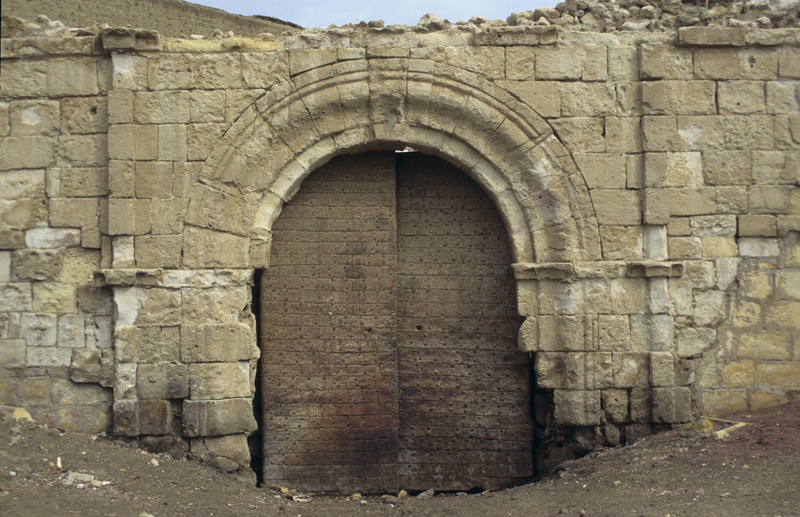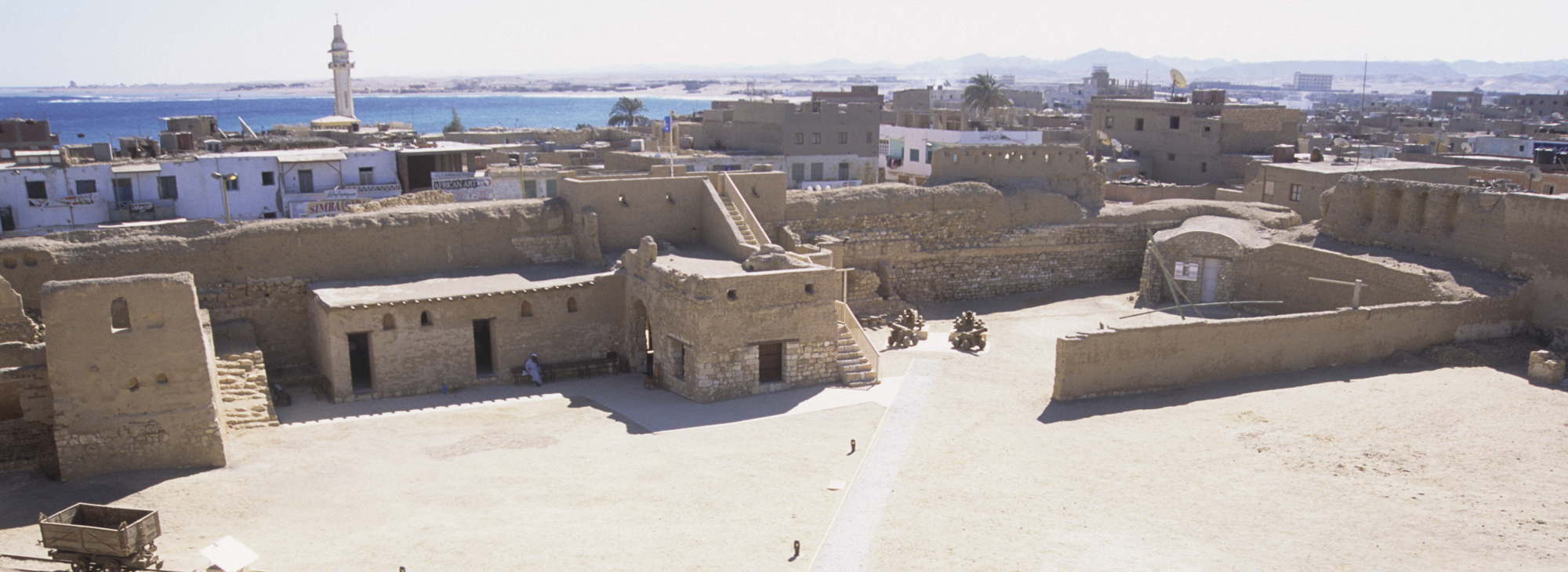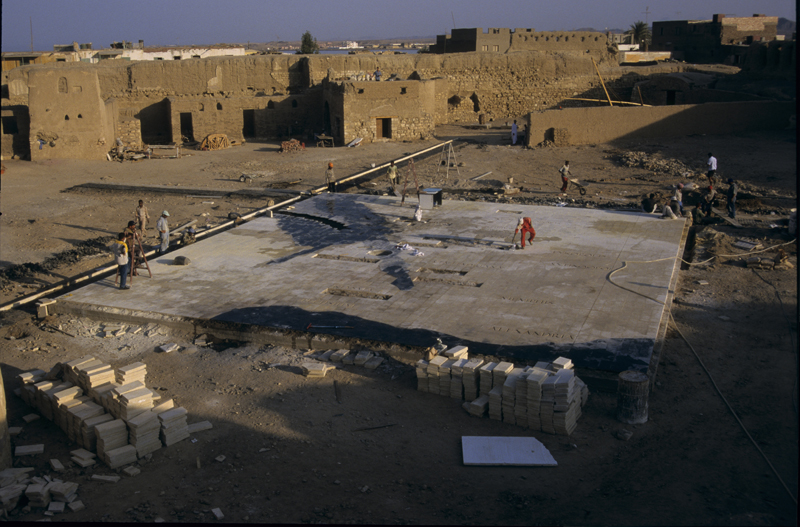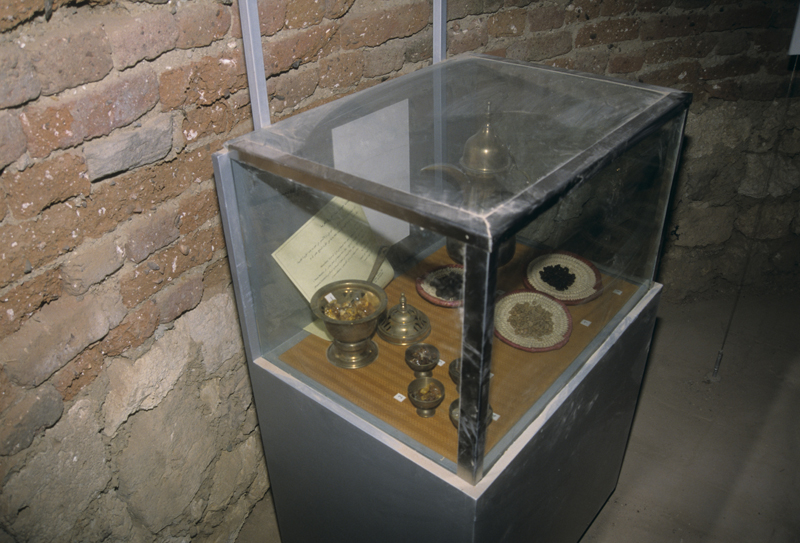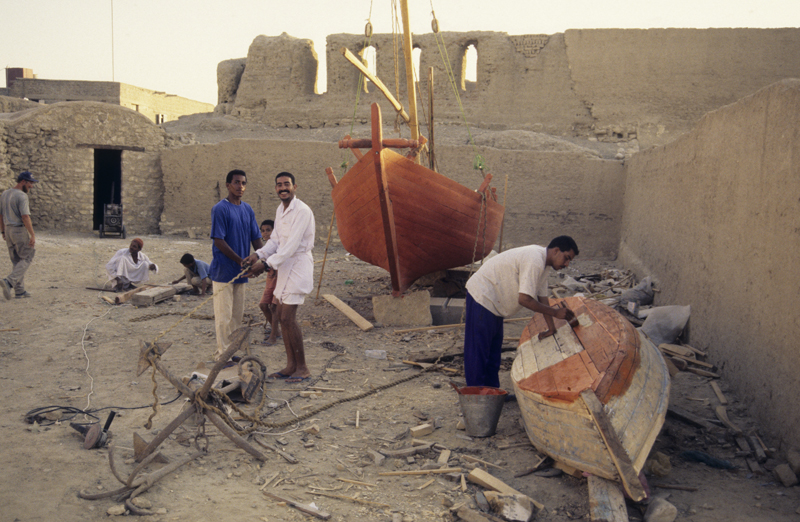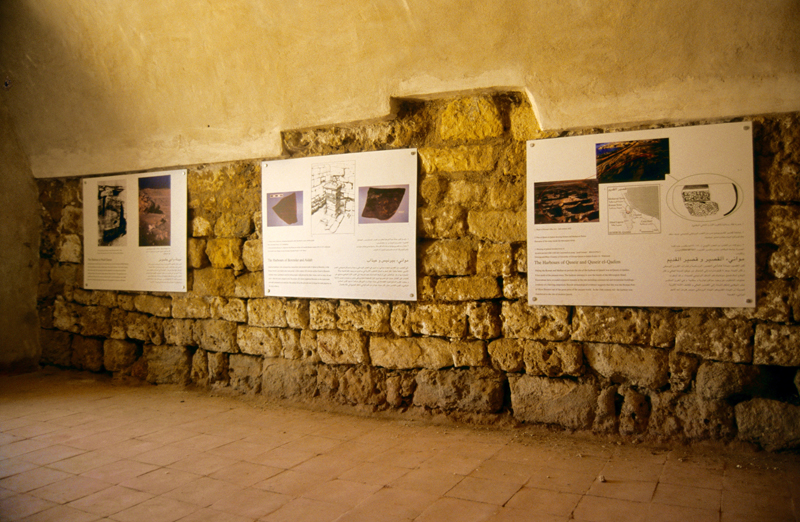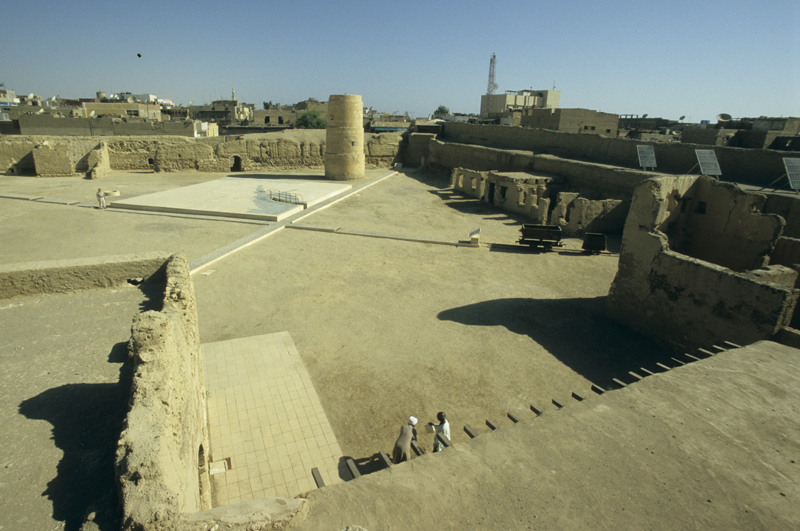- Era16th century
- Project DirectorMichael Jones
- LocationQuseir
- AffiliationMallinson ArchitectsInc.
- Project SponsorUSAID
- Project Dates1996-2005
- Project ImplementerMallinson Architects, Inc.
The harbor city of Quseir is on the Red Sea coast – a three-hour drive east of Luxor – situated at the narrowest point between the Nile River and the Red Sea. Because of this strategically advantageous position, Quseir has operated as a commercial and military harbor since Egypt’s Roman period. In the first century CE, a port developed at Quseir al Qadim and remained active until the fourth century. The Ayyubid dynasty revived it in the 12th-13th centuries, but by the 15th century, the port was deserted for good. However, just five miles (eight kilometers) south of Quseir al Qadim, the Ottomans founded a new harbor and fort in 1571. Centuries later, a project undertaken by the American Research Center in Egypt created a restored fort and visitor center that stands prominently in the center of present-day Quseir city.
The modern history of Quseir Fort in its active years is a captivating kaleidoscope of trade, migration and military power in Egypt. After the Ottomans constructed it, the fort functioned as a military garrison but phased out of use due to local resistance from neighboring Bedouin tribes. In 1799, the Napoleonic army recognized the strategic advantage of the fort’s location – which could help thwart British expansion into Egypt from India – and retook the fort from the local Bedouins. The French reconstructed the fort to face battle and survived a three-day bombardment from the British Royal Navy. In 1801 the French withdrew from Egypt and the fort was deserted again, but the sons of Mohamed Ali revived it in 1816 and used it during military excursions against the Wahhabis.
Quseir remained a power player until the mid-19th century when it faced competition from the much larger port at Suez. Quseir’s importance slowly declined, and for decades the fort housed a phosphorous factory. It served as an Egyptian Coast Guard station for a few decades until 1975, when it was abandoned and fell into disrepair. In 1996, ARCE partnered with USAID to restore the fort and convert it into a visitor center highlighting the heritage of the city of Quseir and the Red Sea coast. This project fell under the umbrella of the Promotion of Sustainable Tourism Cultural Activities, also known as the Mubarak-Gore Agreement.
Work on the Quseir Fort included archaeological excavation, conservation and restoration work on the body of the fort, as well as design and installation of a visitor center. Excavation and restoration efforts repaired the fort’s most pressing structural and aesthetic issues and produced a small but insightful collection of artifacts. Ottoman tobacco pipes, Yemeni coffee cups and Far Eastern blue-and-white porcelain remain on view at the visitor center. Accessible areas provide a range of historical information, with interpretive signage in the three surviving towers, the cistern, the watchtower and the internal courtyards. These displays offer background on the significance of Quseir and the fort over its centuries of use, with themes such as military defense, its role in sea and land trade and religious pilgrimages to present-day Saudi Arabia.
Larger artifacts are on display in the courtyard: original phosphate trucks, a locally commissioned pearl diving boat and a collection of Napoleonic cannons that defended the fort during the British bombardment in 1799. Six of the cannons were displayed around the city’s town hall and painted silver, and another sat outside a local iron smelting workshop. ARCE collected, cleaned and conserved the guns, then placed four inside the visitor center courtyard and two on the parapet overlooking the street. The team also reached out to Nicolas Hall, then keeper of artillery for the British Royal Armories at HMS Victory in England, who classified the cannons as 18th-century French, British and Dutch/Swedish, from Dutch design.
Quseir Fort and the visitor center opened in 1999 and continues to attract tourists to the quiet port city, a fascinating testament to the historic Red Sea trade routes and powerful armies that rose and fell over the centuries in Egypt.
